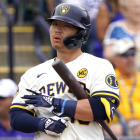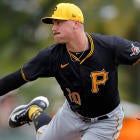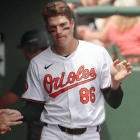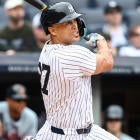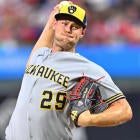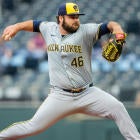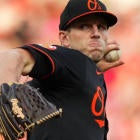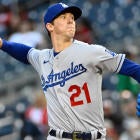One of the difficulties in drafting for the first season of a dynasty league is that no one does it often enough to get especially good at it. By Year 2 of the league, whatever form the draft has taken is radically different. There's no opportunity for a do-over with the entire player pool, not unless you start another dynasty league, and adding just one a year would quickly get out of hand.
It's why I've come to enjoy these dynasty startup mocks even though we never get the payoff of playing them out. They're giving me a better idea what to expect in a format that always feels foreign. I'm developing a better concept of how my opponents will weigh present needs against future benefits while also learning when is the most appropriate time to take a prospect and which is the most appropriate one to take.
If those ideas sound elementary to you, then I'd suggest you're not going deep enough with the analysis. The key to crushing a draft isn't just about knowing what you would do, but what everyone else would do, too. If you're constantly surprised by other people's choices, it makes for a difficult environment to navigate.
I navigated the heck out of this one. I got a surplus of speed and starting pitching, the two scarcest commodities in today's market, but without having to reach for either. The prospects I drafted — Alex Kirilloff, C.J. Abrams, Joey Bart, Marco Luciano and Tarik Skubal — were most anyone's interpretation of high-end, and yet I didn't take my first one until Round 17. The old players I drafted were ones I got at an extreme discount (such as Charlie Blackmon in Round 10 or Charlie Morton in Round 14), and I didn't shy away from those discounts when they presented themselves. Sure, my only projected closer is Ian Kennedy, but emphasizing saves, as fungible as they are, is about the worst way to go about building a dynasty team.
It's pretty close the best outcome I could hope for, as opposed to just "OK, I can work with this," which is how these drafts with experts tend to go. So which experts took part in this one?
1) Christopher Crawford, NBC Sports/Rotoworld (@Crawford_MILB)
2) Joey Mellows, Baseball Brit (@BaseballBrit)
3) Chris Mitchell, FantasyData (@CJMitch73)
4) B_Don, Razzball (@RazzBDon)
5) Joseph Blackburn, lucky reader who got to join in
6) Garrett Atkins, Fake Teams (@13atkins13)
7) Phil Ponebshek, Patton & Company
8) Adam Aizer, CBS Sports (@AdamAizer)
9) Scott White, CBS Sports (@CBSScottWhite)
10) Frank Stampfl, CBS Sports (@Roto_Frank)
11) Nick Mimikos, Stack Attack podcast (@NMimi)
12) Andy Spiteri, Fantasy Alarm (@gasdoc_spit)
You can judge for yourself which team is the best. A couple of details to keep in mind: There are no dedicated minor-league spots, just seven bench spots, and teams can keep however many players they want at season's end.














